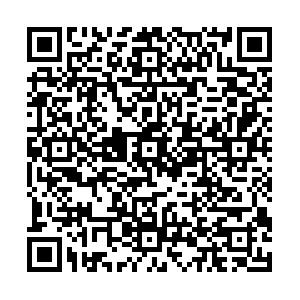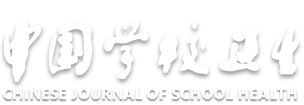Effect of maternal emotional symptoms on emotional and behavioral problems in preschool children
-
摘要:
目的 探讨心理攻击和躯体攻击在母亲情绪症状与学龄前儿童情绪行为问题关联中的中介作用,为有效干预儿童情绪和行为问题相关的风险因素提供参考。 方法 采用分层整群抽样方法,选取安徽省芜湖市12所幼儿园小班儿童及其母亲为研究对象,于2021年6月开展基线调查,随后每半年开展1次随访,共随访3次,采用基线、第2次随访和第3次随访的调查数据,最终纳入有效问卷853份。采用抑郁-焦虑-压力量表简体中文版(DASS-21)、亲子冲突解决策略量表(CTSPC)及长处和困难问卷(SDQ)分别检测母亲情绪症状、心理攻击和躯体攻击及儿童情绪行为问题。 结果 母亲对儿童的躯体攻击表现为男童高于女童(t=3.53,P < 0.05)。相关分析结果显示,母亲抑郁症状、焦虑症状、压力症状评分与心理攻击、躯体攻击、儿童SDQ评分均呈正相关,母亲心理攻击和躯体攻击得分与儿童SDQ评分均呈正相关(r值分别为0.20,0.21,0.18;0.24,0.22,0.10,0.26,0.25,0.18;0.12,0.16,P值均<0.01)。中介分析显示,在控制相关混杂因素后,心理攻击在母亲抑郁症状与儿童情绪行为问题关联中起部分中介效应,中介效应比为8.05%;躯体攻击在母亲抑郁、焦虑及压力症状与儿童情绪行为问题关联中均起部分中介效应,中介效应比分别为15.94%,11.73%,12.54%(P值均 < 0.05)。 结论 心理攻击和躯体攻击在母亲情绪症状与儿童情绪行为问题关联中起部分中介作用,积极改善母亲情绪症状及其对子女的管教方式有助于降低学龄前儿童情绪行为问题的发生。 Abstract:Objective To explore the mediating role of psychological and physical aggression in the association between maternal emotional symptoms with emotional and behavioral problems in preschool children, so as to provide references for effective intervention of risk factors related to children's emotional and behavioral problems. Methods A longitudinal study was conducted to select 12 kindergarten children and their mothers in Wuhu City, Anhui Province by using stratified clustering sampling. The baseline survey was carried out in June 2021, followed up every six months, and a total of 3 follow-ups were administered. Totally 853 valid questionnaires of junior class children were included by the survey data from baseline, second and thirl follow-ups. The Depression Anxiety and Stress Scale-21 (DASS-21), the Parent-Child Conflict Tactics Scales (CTSPC) and the Strength and Difficulties Questionnaire (SDQ) were used to measure maternal emotional symptoms, psychological and physical aggression, and children's emotional and behavioral problems, respectively. Results The physical aggression of mothers towards children in boys was higher than in girls (t=3.53, P < 0.05). The results of correlation analysis showed that maternal depressive symptoms were positively correlated with psychological aggression, physical aggression and children's SDQ scores (r=0.20, 0.21, 0.18, P < 0.01), maternal anxiety symptoms were positively correlated with psychological aggression, physical aggression and children's SDQ scores (r=0.24, 0.22, 0.10, P < 0.01), respectively; maternal stress symptoms were positively correlated with psychological aggression, physical aggression. The SDQ scores were positively correlated (r=0.26, 0.25, 0.18, P < 0.01), and the scores of maternal psychological aggression and physical aggression were positively correlated with the SDQ scores of children (r=0.12, 0.16, P < 0.01). The mediating analysis showed that after controlling for related confounding factors, psychological aggression played a partial mediating effect in the association between maternal depressive symptoms and children's emotional and behavioral problems, and the mediating effect ratio was 8.05%. Physical aggression played a partial mediating effect in the association between maternal depression, anxiety and stress symptoms and children's emotional and behavioral problems, which were 15.94%, 11.73% and 12.54% (P < 0.05), respectively. Conclusions Psychological and physical aggression play mediating roles in the association between maternal emotional symptoms and children's emotional and behavioral problems, and actively improving maternal emotional symptoms and their children's discipline methods can help reduce the occurrence of emotional and behavioral problems in preschool children. -
Key words:
- Emotional /
- Behavior /
- Mental health /
- Mothers /
- Child, preschool
1) 利益冲突声明 所有作者声明无利益冲突。 -
表 1 儿童人口学特征构成在随访和失访组间的比较
Table 1. Demographic characteristics of children constituted the comparison between the follow-up and loss-to-follow-up groups
人口学指标 选项 人数 失访 随访 χ2值 P值 性别 男 549 137(53.9) 412(48.3) 2.49 0.12 女 558 117(46.1) 441(51.7) 是否早产 是 48 16(6.3) 32(3.8) 3.06 0.08 否 1 059 238(93.7) 821(96.2) 是否独生子女 是 585 133(52.4) 452(53.0) 0.03 0.86 否 522 121(47.6) 401(47.0) 母乳喂养持续时间/月 ≤6 292 81(31.9) 211(24.7) 5.47 0.07 >7~12 541 118(46.5) 423(49.6) >12 274 55(21.7) 219(25.7) 母亲文化程度 初中及以下 140 32(12.6) 108(12.7) 0.49 0.78 高中、中专 266 57(22.4) 209(24.5) 大学专科及以上 701 165(65.0) 536(62.8) 家庭人均月收入/元 ≤3 000 52 9(3.5) 43(5.0) 3.42 0.33 3 001~6 000 338 79(31.1) 259(30.4) 6 001~10 000 409 86(33.9) 323(37.9) >10 000 308 80(31.5) 228(26.7) 家庭结构 大家庭 400 91(35.8) 309(36.2) 0.02 0.99 核心家庭 669 154(60.6) 515(60.4) 其他家庭 38 9(3.5) 29(3.4) 注: ()内数字为构成比/%。 表 2 不同性别儿童SDQ、母亲情绪症状、心理攻击与躯体攻击得分比较(x±s)
Table 2. Comparison of SDQ, maternal emotional symptoms, psychological aggression and physical aggression scores of children of different genders (x±s)
性别 人数 SDQ总分 母亲情绪症状 母亲心理攻击 母亲躯体攻击 抑郁症状 焦虑症状 压力症状 男 412 12.05±4.13 1.07±1.92 1.23±1.69 1.07±1.92 5.13±3.57 3.09±4.17 女 441 12.13±4.76 0.99±1.73 1.21±1.88 0.98±1.73 4.65±3.50 2.21±3.00 t值 -0.26 0.68 0.12 0.67 1.96 3.53 P值 0.80 0.50 0.90 0.50 0.05 < 0.01 表 3 母亲情绪症状、心理攻击、躯体攻击及儿童情绪行为问题的相关分析(r值,n=853)
Table 3. Analysis of maternal emotional symptoms, psychological aggression, physical aggression and children's emotional and behavioral problems(r, n=853)
变量 抑郁症状 焦虑症状 压力症状 心理攻击 躯体攻击 焦虑症状 0.63 压力症状 0.66 0.69 心理攻击 0.20 0.24 0.26 躯体攻击 0.21 0.22 0.25 0.63 SDQ总分 0.18 0.10 0.18 0.12 0.16 注:P值均<0.01。 表 4 母亲心理攻击、躯体攻击在情绪症状与儿童情绪行为问题关联中的中介效应分析(n=853)
Table 4. Analysis of the mediating effect of psychological aggression and physical aggression in the association between maternal emotional symptoms and children's emotional and behavioral problems(n=853)
母亲情绪症状 中介变量 模型 间接效应值(95%CI) Boot标准误 相对中介效应/% 抑郁 心理攻击 1 0.017(0.003~0.036) 0.009 9.36 2 0.014(0.000~0.032) 0.008 8.05 躯体攻击 1 0.021(0.007~0.043) 0.009 11.56 2 0.019(0.005~0.039) 0.010 15.94 焦虑 心理攻击 1 0.019(0.001~0.040) 0.010 9.33 2 0.015(-0.001~0.036) 0.010 8.28 躯体攻击 1 0.023(0.008~0.046) 0.010 11.46 2 0.021(0.005~0.042) 0.009 11.73 压力 心理攻击 1 0.015(-0.001~0.033) 0.009 9.09 2 0.011(-0.003~0.028) 0.008 7.61 躯体攻击 1 0.020(0.005~0.040) 0.009 12.66 2 0.019(0.004~0.039) 0.009 12.54 注:模型1为单因素分析;模型2为控制学龄前儿童的性别、年龄、父母年龄、是否早产、是否独生子女、父母文化水平等。 -
[1] VASILVA M, GRAF R K, REINELT T, et al. Research review: a Meta-analysis of the international prevalence and comorbidity of mental disorders in children between 1 and 7 years[J]. J Child Psychol Psychiatry, 2021, 62(4): 372-381. doi: 10.1111/jcpp.13261 [2] 崔洁. 学龄前儿童EBPs与家庭环境关系的调查[J]. 临床医药文献电子杂志, 2019, 6(34): 176-177. https://www.cnki.com.cn/Article/CJFDTOTAL-LCWX201934131.htmCUI J. A survey of the relationship between EBPs and family environment in preschool children[J]. Elec J Clin Med Literat, 2019, 6(34): 176-177. (in Chinese) https://www.cnki.com.cn/Article/CJFDTOTAL-LCWX201934131.htm [3] 刘雯雯, 伍晓艳, 陶舒曼, 等. 学龄前儿童健康危害行为与情绪行为问题的关联研究[J]. 中华预防医学杂志, 2020, 54(11): 1255-1260.LIU W W, WU X Y, TAO S M, et al. Association between health-hazardous behaviors and emotional behavior problems in preschool children[J]. Chin J Prev Med, 2020, 54(11): 1255-1260. (in Chinese) [4] ARSLAN I B, LUCASSEN N, VAN L, et al. Early childhood internalizing problems, externalizing problems and their co-occurrence and adaptive functioning in emerging adulthood: a 16-year follow-up study[J]. Soc Psychiatry Psychiatr Epidemiol, 2021, 56(2): 193-206. doi: 10.1007/s00127-020-01959-w [5] HUMPHREYS K L, KIRCANSKI K, COLICH N L, et al. Attentional avoidance of fearful facial expressions following early life stress is associated with impaired social functioning[J]. J Child Psychol Psychiatry, 2016, 57(10): 1174-1182. doi: 10.1111/jcpp.12607 [6] FANJ Y, RAAT H, WINDHORST D A, et al. The association between stressful life events and emotional and behavioral problems in children 0-7 years old: the CIKEO study[J]. Int J Environ Res Public Health, 2022, 19(3): 1650. doi: 10.3390/ijerph19031650 [7] 王心柱, 李若瑜, 杨亚红, 等. 母亲情绪症状与学龄前儿童情绪行为问题的关联[J]. 中国学校卫生, 2023, 44(2): 256-260, 265. doi: 10.16835/j.cnki.1000-9817.2023.02.022WANG X Z, LI R Y, YANG Y H, et al. Relationship between maternal emotional symptoms and emotional and behavioral problems of preschool offspring[J]. Chin J Sch Health, 2023, 44(2): 256-260, 265. (in Chinese) doi: 10.16835/j.cnki.1000-9817.2023.02.022 [8] 黄永玲, 李若瑜, 方亮, 等. 家庭教养方式与3~6岁儿童情绪行为问题的关联[J]. 中国学校卫生, 2022, 43(2): 242-246. doi: 10.16835/j.cnki.1000-9817.2022.02.019HUANG Y L, LI R Y, FANG L, et al. Relationship between family rearing styles and 3-6-year-old children's emotional and behavior problems[J]. Chin J Sch Health, 2022, 43(2): 242-246. (in Chinese) doi: 10.16835/j.cnki.1000-9817.2022.02.019 [9] 荣璠, 李若瑜, 高畅, 等. 母亲童年期不良经历及教养方式与学龄前儿童情绪行为问题的关联[J]. 中国学校卫生, 2022, 43(8): 1134-1138. doi: 10.16835/j.cnki.1000-9817.2022.08.004RONG F, LI R Y, GAO C, et al. Association of maternal adverse childhood experiences and parenting style with emotional behavior problems in preschool children[J]. Chin J Sch Health, 2022, 43(8): 1134-1138. (in Chinese) doi: 10.16835/j.cnki.1000-9817.2022.08.004 [10] 席春媛, 王玲艳. 母亲抑郁焦虑压力对其身体虐待幼儿风险的影响: 亲子冲突的中介作用与社会支持的调节作用[J]. 学前教育研究, 2021(10): 32-43. https://www.cnki.com.cn/Article/CJFDTOTAL-XQJY202110006.htmXI C Y, WANG L Y. The influence of mother's depression, anxiety and stress on the risk of physical abuse: the mediating role of parent-child conflict and the moderating role of social support[J]. Stud Early Child Educ, 2021(10): 32-43. (in Chinese) https://www.cnki.com.cn/Article/CJFDTOTAL-XQJY202110006.htm [11] GOODMAN S H, SIMON H, SHAMBLAW A L, et al. Parenting as a mediator of associations between depression in mothers and children's functioning: a systematic review and Meta-analysis[J]. Clin Child Fam Psychol Rev, 2020, 23(4): 427-460. doi: 10.1007/s10567-020-00322-4 [12] ARAUJO M, SILVA E P, LUDERMIR A B. Maternal educational practices and mental health disorders of school-age children[J]. J Pediatr, 2023, 99(2): 193-202. doi: 10.1016/j.jped.2022.09.004 [13] MILLER-PIRRER C L, PERRIN R D, KOCUR J L. Parental physical and psychological aggression: psychological symptoms in young adults[J]. Child Abuse Negl, 2009, 33(1): 1-11. doi: 10.1016/j.chiabu.2008.12.001 [14] LOVIDONB P F, LOVIBOND S H. The structure of negative emotional states: comparison of the Depression Anxiety Stress Scales (DASS) with the beck depression and anxiety inventories[J]. Behav Res Ther, 1995, 33(3): 335-343. doi: 10.1016/0005-7967(94)00075-U [15] STRAUS M A, HAMBY S L, FINKELHOR D, et al. Identification of child maltreatment with the Parent-Child Conflict Tactics Scales: development and psychometric data for a national sample of American parents[J]. Child Abuse Negl, 1998, 22(4): 249-270. doi: 10.1016/S0145-2134(97)00174-9 [16] LEUNG P W, WONG W C, CHEN W Q, et al. Prevalence and determinants of child maltreatment among high school students in Southern China: a large scale school based survey[J]. Child Adolesc Psychiatry Ment Health, 2008, 2(1): 27. doi: 10.1186/1753-2000-2-27 [17] 寇建华, 杜亚松, 夏黎明. 儿童长处和困难问卷(父母版)上海常模的信度和效度[J]. 上海精神医学, 2005(1): 25-28. https://www.cnki.com.cn/Article/CJFDTOTAL-JSYI200501006.htmKOU J H, DU Y S, XIA L M. Reliability and validity of "Children Strengths and Difficulties Questionnaire" in Shanghai norm[J]. Shanghai Arch Psychiatry, 2005(1): 25-28. (in Chinese) https://www.cnki.com.cn/Article/CJFDTOTAL-JSYI200501006.htm [18] 许文兵, 王孟成, 邓嘉欣, 等. 长处和困难问卷中文版的信度概化分析[J]. 中国临床心理学杂志, 2019, 27(1): 67-72. https://www.cnki.com.cn/Article/CJFDTOTAL-ZLCY201901014.htmXU W B, WANG M C, DENG J X, et al. Reliability generalization for the Chinese version of Strengths and Difficulties Questionnaire[J]. Chin J Clin Psychol, 2019, 27(1): 67-72. (in Chinese) https://www.cnki.com.cn/Article/CJFDTOTAL-ZLCY201901014.htm [19] YAMADA M, TANAKA K, ARAKAWA M, et al. Perinatal maternal depressive symptoms and risk of behavioral problems at five years[J]. Pediatr Res, 2022, 92(1): 315-321. doi: 10.1038/s41390-021-01719-9 [20] RAJYAGURU P, MORAN P, CORDERO M, et al. Disciplinary parenting practice and child mental health: evidence from the UK millennium cohort study[J]. J Am Acad Child Adolesc Psychiatry, 2019, 58(1): 108-116. doi: 10.1016/j.jaac.2018.06.033 [21] XING X, WANG M. Sex differences in the reciprocal relationships between mild and severe corporal punishment and children's internalizing problem behavior in a Chinese sample[J]. J Appl Dev Psychol, 2013, 34: 9-16. doi: 10.1016/j.appdev.2012.09.004 [22] GOODMAN S H, SIMON H, SHAMBLAW A L, et al. Parenting as a mediator of associations between depression in mothers and children's functioning: a systematic review and Meta-analysis[J]. Clin Child Fam Psychol Rev, 2020, 23(4): 427-460. doi: 10.1007/s10567-020-00322-4 [23] SUOR J H, CALENTINO A E, GRANROS M, et al. Maternal error-related negativity relationship with offspring error-related negativity and negative parenting styles: a novel model of internalizing psychopathology risk[J]. Biol Psychiatry Cogn Neurosci Neuroimag, 2022, 7(4): 435-442. [24] CAO M, POWERS A, CROSS D, et al. Maternal emotion dysregulation, parenting stress, and child physiological anxiety during dark-enhanced startle[J]. Dev Psychobiol, 2017, 59(8): 1021-1030. doi: 10.1002/dev.21574 [25] ZOU J. The effect of parenting pressure on children's internalizing problem behaviors and its mechanism[J]. Work, 2021, 69(2): 675-685. doi: 10.3233/WOR-213508 [26] NLLMURA J, NAKANISHI M, YAMASAKI S, et al. Maternal parenting stress from birth to 36 months, maternal depressive symptoms, and physical punishment to 10-year-old children: a population-based birth cohort study[J]. Soc Psychiatry Psychiatr Epidemiol, 2022, 57(11): 2207-2215. doi: 10.1007/s00127-022-02319-6 -

 点击查看大图
点击查看大图
计量
- 文章访问数: 357
- HTML全文浏览量: 209
- PDF下载量: 31
- 被引次数: 0





 下载:
下载: